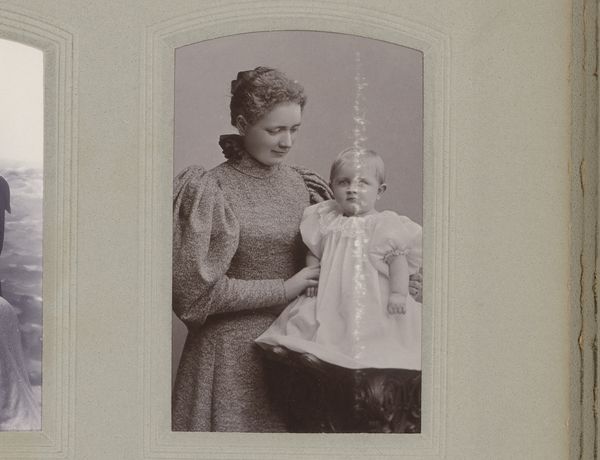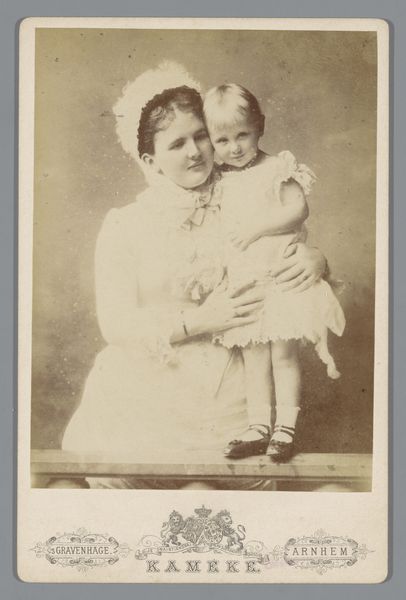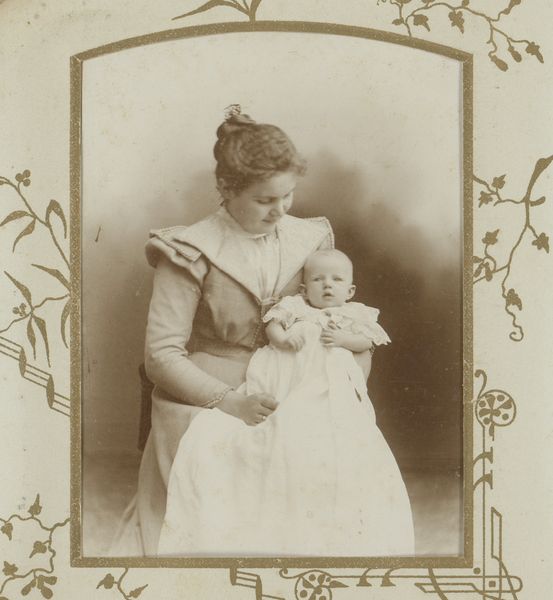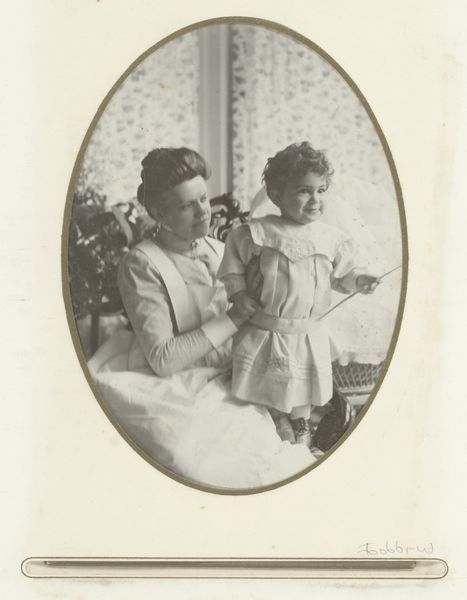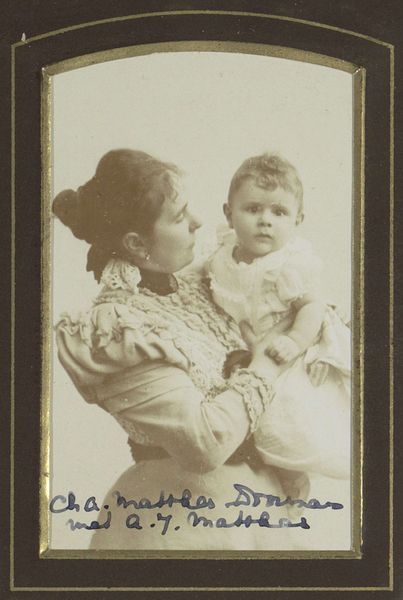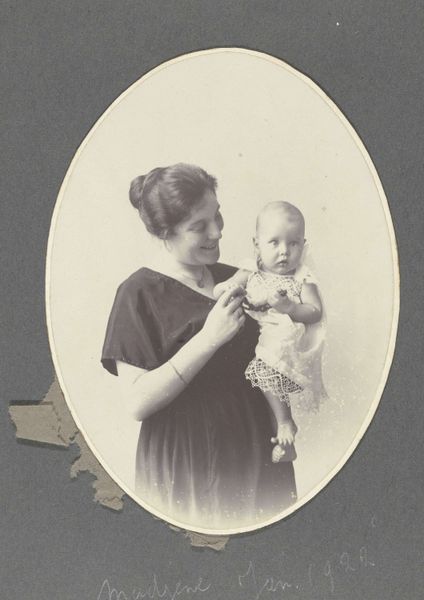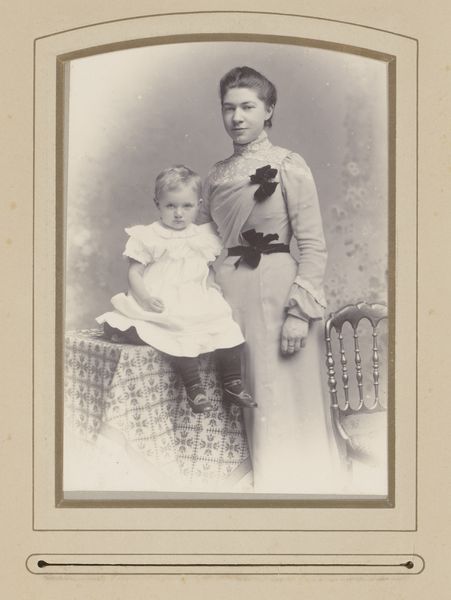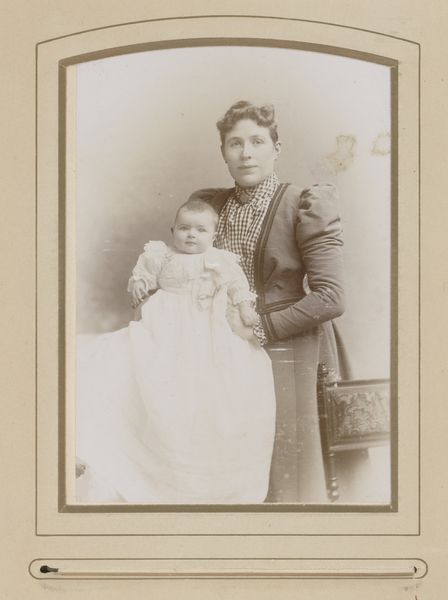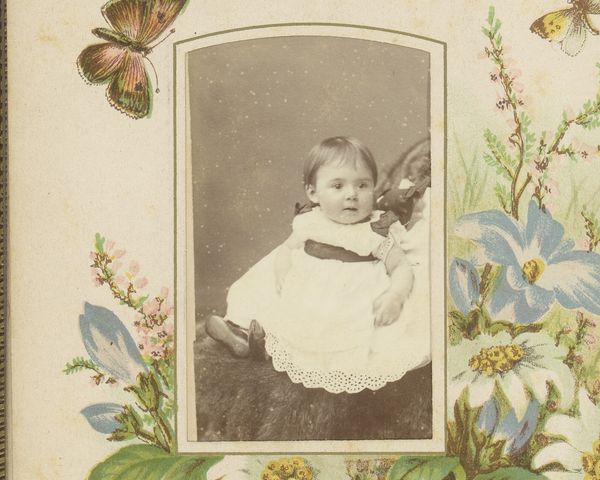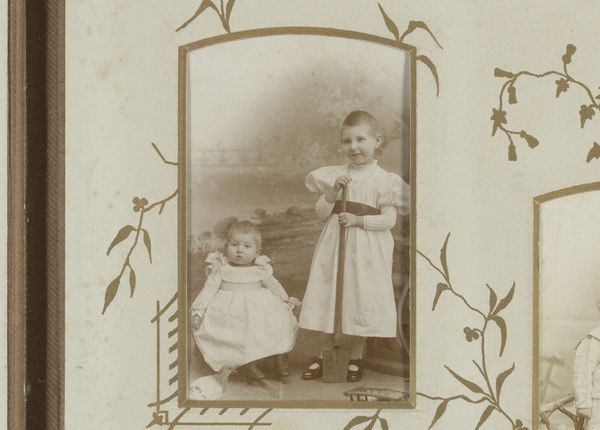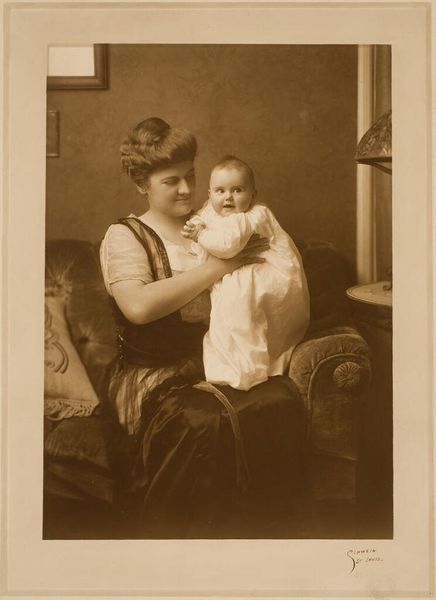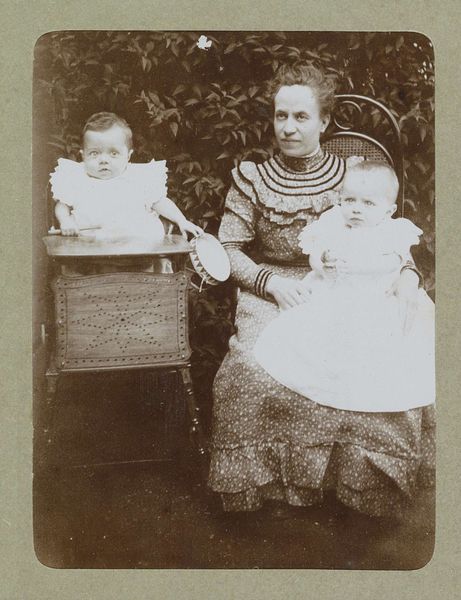
photography
#
portrait
#
pictorialism
#
photography
#
watercolor
Dimensions: height 169 mm, width 85 mm
Copyright: Rijks Museum: Open Domain
Curator: Let's consider this compelling piece titled "Portret van een vrouw bij een meisje staand op een stoel", believed to have been crafted between 1897 and 1920 by E. Uhlenhuth, utilizing the medium of photography. Editor: There's an immediate fragility that strikes me—the muted tones, the delicate pose. It almost feels like I'm peering into a memory fading with time. Curator: Absolutely. The photographic process, combined with the style of pictorialism, points to deliberate choices in crafting the image. I'm curious to explore the intersection of gender and societal expectations encoded within this portrait. The way the woman’s dress is presented compared to the young girls clothes makes you ask, is she her mother or her older sister? Editor: Interesting. I'm drawn to the materiality of the photograph itself. This isn't a quick snapshot. There is obvious intervention happening here that has clear intent. The details of the garments are lost somewhat but you notice that there is labour involved with creating these clothes for both. I am intrigued by the type of stock this was made on, how long was the duration? Was this available commercially? It hints at the processes of image making and also social hierarchy. Curator: The interplay of class and identity is worth unpacking here. Who had access to professional photography during this period, and how did the process itself contribute to constructing representations of femininity? This image challenges and reifies notions of gendered roles. How can we read into the fact she has to be standing on the chair for the picture? Is there also something inherently subversive in its representation of maternal care or domesticity within this setting. Editor: For me, the key question circles back to the work itself as a manufactured object. What was the intention behind capturing these women this way? What processes and materials informed that? In a pre-digital world these are powerful tools. How does that power sit with these individuals? What did it mean for them to see themselves or represent themselves in this medium. Curator: Seeing through the lens of contemporary theory adds fascinating layers to our understanding, doesn't it? It allows us to examine historical narratives while connecting it to the contemporary female gaze. Editor: Absolutely. Shifting our attention to the means of production deepens that understanding by connecting the act of making images to broader questions of class, labor, and consumption. A seemingly simple photograph yields complex insights!
Comments
No comments
Be the first to comment and join the conversation on the ultimate creative platform.
